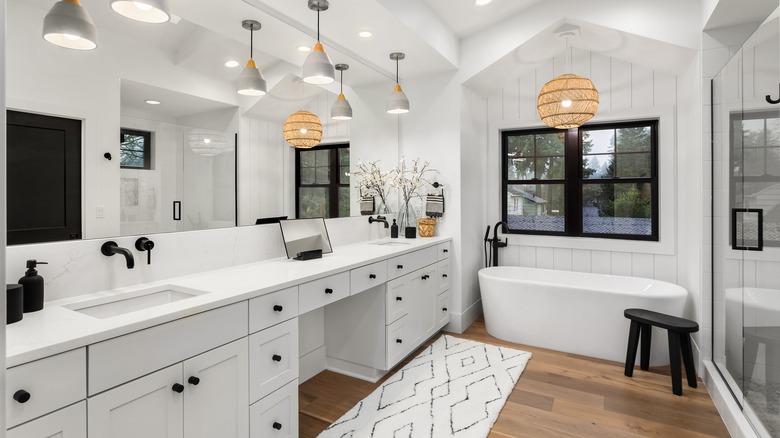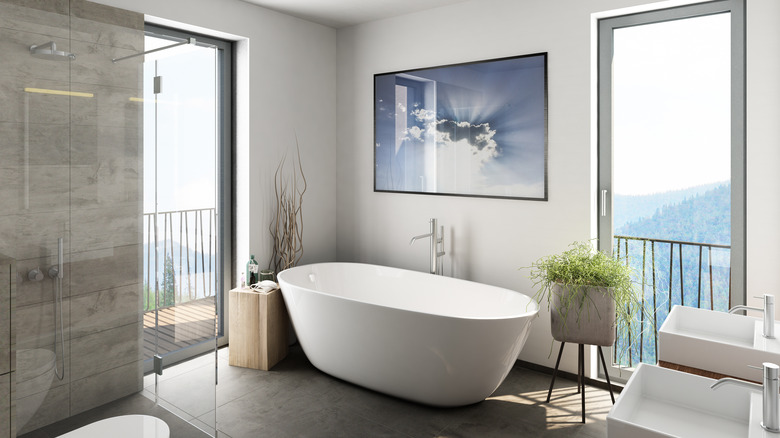The Bathroom Feature That Can Be A Germ Hotspot If You Don't Have The Space For It
Did you know that the average shower floor is home to over 60 times more bacteria (per SafeHome.org) than a toilet seat? The act of cleaning up can get pretty messy, and if you're not diligent about scrubbing down your bathroom once a week, dirt and grime can accumulate rather quickly. Because of this, it's important to design the space in a way that's not only aesthetically pleasing, but easy to clean. There are certain features that might look beautiful in a magazine or on Instagram, but can be completely impractical from a day-to-day maintenance standpoint. And one of those features is a freestanding bathtub in a small bathroom.
If you have a large primary bathroom where the freestanding tub can have its own designated area, and you can freely move around it to clean underneath — feel free to eye up all the freestanding bathtubs you'll want to relax in. But according to a TikTok posted by interior designer Brie Turton, if you have limited square footage and have to cram the tub in a corner, you won't be able to access the sides of the bath that are against the wall. That means that dust, dirt, and grime will accumulate in those areas, and there is no way to clean them, creating a germy hotspot. This will make the room feel less spa-like and more dirty-motel-centric. It's one of the main reasons why you should think twice before buying a clawfoot tub for your bathroom. Here is a closer look into why freestanding tubs can become a cleaning nightmare.
Why freestanding tubs can be difficult to clean
Freestanding bathtubs are easiest to keep sanitary when put in the middle of a room rather than being tucked in the corner. When done this way, they're a breeze to clean around because you have access to all sides of the tub. If a tub is tightly in the corner, the walls box it in, making it impossible to clean the inaccessible sides. Dirt and hair buildup can gather in the corners and be very difficult to reach with a vacuum hose. Even worse, moisture can spill over the edge of the tub and accumulate next to the wall where you can't access it, leading to potential mildew and mold growth.
If you do see mildew or mold growing in your bathroom, there are two things you can do. The first is more labor intensive and involves disconnecting the tub from its pipes and moving it (with the help of several people due to its weight). The second involves disconnecting the tub from the drain and then propping up its sides on a bolster to elevate it a few inches off the ground. You can then pour a mixture of water and bleach from a bucket onto the floor, and clean the area using a flat mop such as a Swiffer. However, this won't gain you access to the wall, just the floor, so if the growth has spread onto the drywall, you will likely have to completely remove the tub to get to it.

